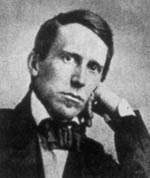Stephen Foster (sculpture)
Coordinates: 40°26′36″N 79°57′06″W / 40.443427°N 79.951782°W
 | |
| Artist | Giuseppe Moretti |
|---|---|
| Year | 1900 |
| Type | Sculpture |
| Location | Pittsburgh, Pennsylvania |
Stephen Foster is a landmark public sculpture in bronze by Giuseppe Moretti on Schenley Plaza in the Oakland section of Pittsburgh, Pennsylvania. Sited along Forbes Avenue near the entrance of Carnegie Museum of Natural History, in the shadow of Dippy, a life-size sculpture of a Diplodocus dinosaur, and in close proximity to the University of Pittsburgh's Stephen Foster Memorial, the Foster statue is one of the city's best known and most controversial.
The work of art is composed of two figures: a seated Stephen Collins Foster, the famous Pittsburgh-born songwriter with a notebook in hand, catching inspiration from a Negro slave at his feet strumming a banjo. The sculpture's pedestal is four feet, three inches, and the figures measure ten feet.
History
Stephen Foster was first erected in 1900 in the city's Highland Park, where Moretti had recently completed grand neoclassical gates for the park's main entrance. An economic depression in the 1890s, however, caused the Pittsburgh Press to head a subscription drive to garner funds for the piece. Nearly 50,000 Pittsburghers lined the parade route for the statue's dedication. Victor Herbert, the Pittsburgh Symphony Orchestra's new music director, led 3,000 school children in the singing of Foster tunes. At the ceremony Stephen Foster's only daughter unveiled the statue and nieces of U.S. President James Buchanan laid a wreath at its base.
The actual design of the statue was by committee. Andrew W. Mellon the banker, Edward Manning Bigelow the parks director, Robert Pitcairn the Pennsylvania Railroad mogul, as well as the director of the Carnegie Museum of Art, among others, all met to brainstorm scenarios for the artwork. The current design was suggested by committee member T.J. Keenan, Jr., editor of the Pittsburgh Press, and embraced by Moretti, according to the paper. It is intended to commemorate the song "Uncle Ned," and shows Ned, a slave, with Foster. Stephen Foster's brother Morrison Foster sat as a model in Moretti's New York studio.
Decades later during the Great Depression the sculpture was repeatedly vandalized; the banjo and Foster's pencil were broken off and sold, presumably, as scrap metal. Eventually Pittsburgh mayor Cornelius D. Scully requested the statue be moved to a more visible, safer place. During World War II it was moved to Oakland's Schenley Plaza, along busy Forbes Avenue and across the street from Stephen Foster Memorial. It was rededicated on June 29, 1944.
Controversy
At least since the African-American Civil Rights Movement (1955-1968), this statue of a white man and slave has periodically stirred public debate. Opponents claim it is inherently racist. Some historians counter that "Uncle Ned", the song whose composition is depicted, is actually one of the first anti-slavery songs, though a subtle one.
In 2000, a citizen group petitioned Pittsburgh mayor Tom Murphy to form a task force about the controversy. Some want a new statue. Others suggest a placard be placed on the its base to explain why few white people took offensive a century ago about a sculpture of a slave sitting at a white man's feet.
Another controversy over the Foster & Ned statue involves Ned's bare feet. The banjo-strumming slave is depicted with bare feet. Some claim rubbing Ned's "lucky big toe" brings good luck. The practice is even promoted in the article "Statue Burnishing Etiquette" on Roadside America.com: Your Online Guide to Offbeat Tourist Attractions.
See also
References
- Gay, Vernon and Marilyn Evert (1983). Discovering Pittsburgh's Sculpture. Pittsburgh: University of Pittsburgh Press. ISBN 0-8229-3467-1.
- Brian O'Neill (2000). Stephen Foster statue: Wrong place or wrong time?: story from the Pittsburgh Post-Gazette. Retrieved May 17, 2007.
